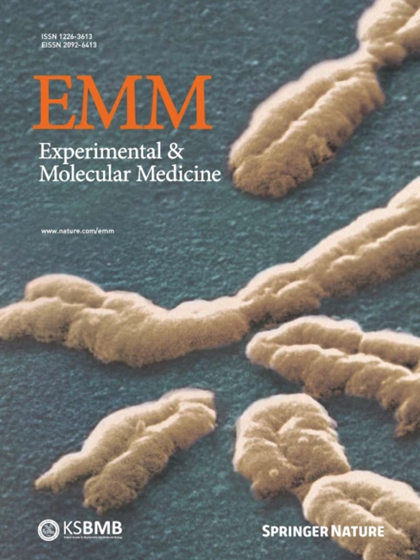Generation of hypoimmunogenic universal iPS cells through HLA-type gene knockout
IF 9.5
2区 医学
Q1 BIOCHEMISTRY & MOLECULAR BIOLOGY
引用次数: 0
Abstract
Hypoimmunogenic universal induced pluripotent stemn (iPS) cells were generated through the targeted disruption of key genes, including human leukocyte antigen (HLA)-A, HLA-B and HLA-DR alpha (DRA), using the CRISPR–Cas9 system. This approach aimed to minimize immune recognition and enhance the potential of iPS cells for allogeneic therapy. Heterozygous iPS cells were used for guide RNA design and validation to facilitate the knockout (KO) of the HLA-A, HLA-B and HLA-DRA genes. The electroporation of iPS cells using the selected guide RNAs enabled the generation of triple-KO iPS cells, followed by single-cell cloning for clone selection. Clone A7, an iPS cell with targeted KOs of the HLA-A, HLA-B and HLA-DRA genes, was identified as the final candidate. Messenger RNA analysis revealed robust expression of pluripotency markers, such as octamer-binding transcription factor 4, sex-determining region Y box 2, Krüppel-like factor 4, Lin-28 homolog A and Nanog homeobox, while protein expression assays confirmed the presence of octamer-binding transcription factor 4, stage-specific embryonic antigen 4, Nanog homeobox and tumor rejection antigen 1–60. A karyotype examination revealed no anomalies, and three-germ layer differentiation assays confirmed the differentiation potential. After interferon gamma stimulation, the gene-corrected clone A7 lacked HLA-A, HLA-B and HLA-DR protein expression. Immunogenicity testing further confirmed the hypoimmunogenicity of clone A7, which was evidenced by the absence of proliferation in central memory T cells and effector memory T cells. In conclusion, clone A7, a triple-KO iPS cell clone that demonstrates immune evasion properties, retained its intrinsic iPS cell characteristics and exhibited no immunogenicity. This study focuses on improving cell therapy by reducing the immune response to induced pluripotent stem (iPS) cells. Researchers aimed to generate iPS cells that are less likely to be rejected by the immune system by editing specific genes. The team used a tool called CRISPR–Cas9 to remove certain genes, known as HLA-A, HLA-B and HLA-DRA, from iPS cells. By removing these genes, researchers hoped to make the iPS cells less recognizable to the immune system. The study found that the edited iPS cells did not trigger a strong immune response in lab tests. The edited cells maintained their ability to differentiate into various cell types and showed reduced signs of being attacked by immune cells. This research suggests that editing specific genes in iPS cells can make them more suitable for use in therapies without being rejected by the body. This summary was initially drafted using artificial intelligence, then revised and fact-checked by the author.

通过hla型基因敲除产生低免疫原性通用iPS细胞。
利用CRISPR-Cas9系统,通过靶向破坏人类白细胞抗原(HLA)-A、HLA- b和HLA- dr α (DRA)等关键基因,生成低免疫原性通用诱导多能干细胞(iPS)。这种方法旨在减少免疫识别并增强iPS细胞用于同种异体治疗的潜力。杂合子iPS细胞用于引导RNA设计和验证,以促进HLA-A, HLA-B和HLA-DRA基因的敲除。利用所选的引导rna电穿孔iPS细胞,生成三ko iPS细胞,然后进行单细胞克隆进行克隆选择。克隆A7是一种靶向HLA-A、HLA-B和HLA-DRA基因的iPS细胞,被确定为最终候选细胞。信使RNA分析显示多能性标记,如八聚体结合转录因子4、性别决定区Y box 2、kr ppel样因子4、Lin-28同源物A和Nanog同源盒,而蛋白质表达分析证实了八聚体结合转录因子4、阶段特异性胚胎抗原4、Nanog同源盒和肿瘤排斥抗原1-60的存在。核型检查未发现异常,三胚层分化试验证实了分化潜力。干扰素γ刺激后,基因校正克隆A7缺乏HLA-A、HLA-B和HLA-DR蛋白表达。免疫原性试验进一步证实了A7克隆的低免疫原性,在中枢记忆T细胞和效应记忆T细胞中没有增殖。综上所述,克隆A7,一个具有免疫逃避特性的三ko iPS细胞克隆,保留了其固有的iPS细胞特性,没有表现出免疫原性。
本文章由计算机程序翻译,如有差异,请以英文原文为准。
求助全文
约1分钟内获得全文
求助全文
来源期刊

Experimental and Molecular Medicine
医学-生化与分子生物学
CiteScore
19.50
自引率
0.80%
发文量
166
审稿时长
3 months
期刊介绍:
Experimental & Molecular Medicine (EMM) stands as Korea's pioneering biochemistry journal, established in 1964 and rejuvenated in 1996 as an Open Access, fully peer-reviewed international journal. Dedicated to advancing translational research and showcasing recent breakthroughs in the biomedical realm, EMM invites submissions encompassing genetic, molecular, and cellular studies of human physiology and diseases. Emphasizing the correlation between experimental and translational research and enhanced clinical benefits, the journal actively encourages contributions employing specific molecular tools. Welcoming studies that bridge basic discoveries with clinical relevance, alongside articles demonstrating clear in vivo significance and novelty, Experimental & Molecular Medicine proudly serves as an open-access, online-only repository of cutting-edge medical research.
 求助内容:
求助内容: 应助结果提醒方式:
应助结果提醒方式:


